You might be thinking, why would anyone 3D print flower pots? You can buy clay pots relatively cheaply in your local gardening or flower shop. However, there are many cool tricks that 3D printing enables – from self-watering planters and inserts, oddly shaped pots and avocado boats to propagating stations and grow light holders. As it usually is with 3D printing, your imagination is the limit!
Make it functional
It’s not easy to guess how much water your plants need. Having a planter with holes on the bottom and a tray beneath it makes this a lot easier. If the tray is empty you know the plant needs watering soon. And maybe, more importantly, it’s nearly impossible to overwater the plant because the water has an escape route (the tray will overflow).
The downsides are that A) you might not like the way it looks, especially indoors. And B) it doesn’t really solve the problem of you having to actively water the plant quite often unless you buy or print a pretty big tray.
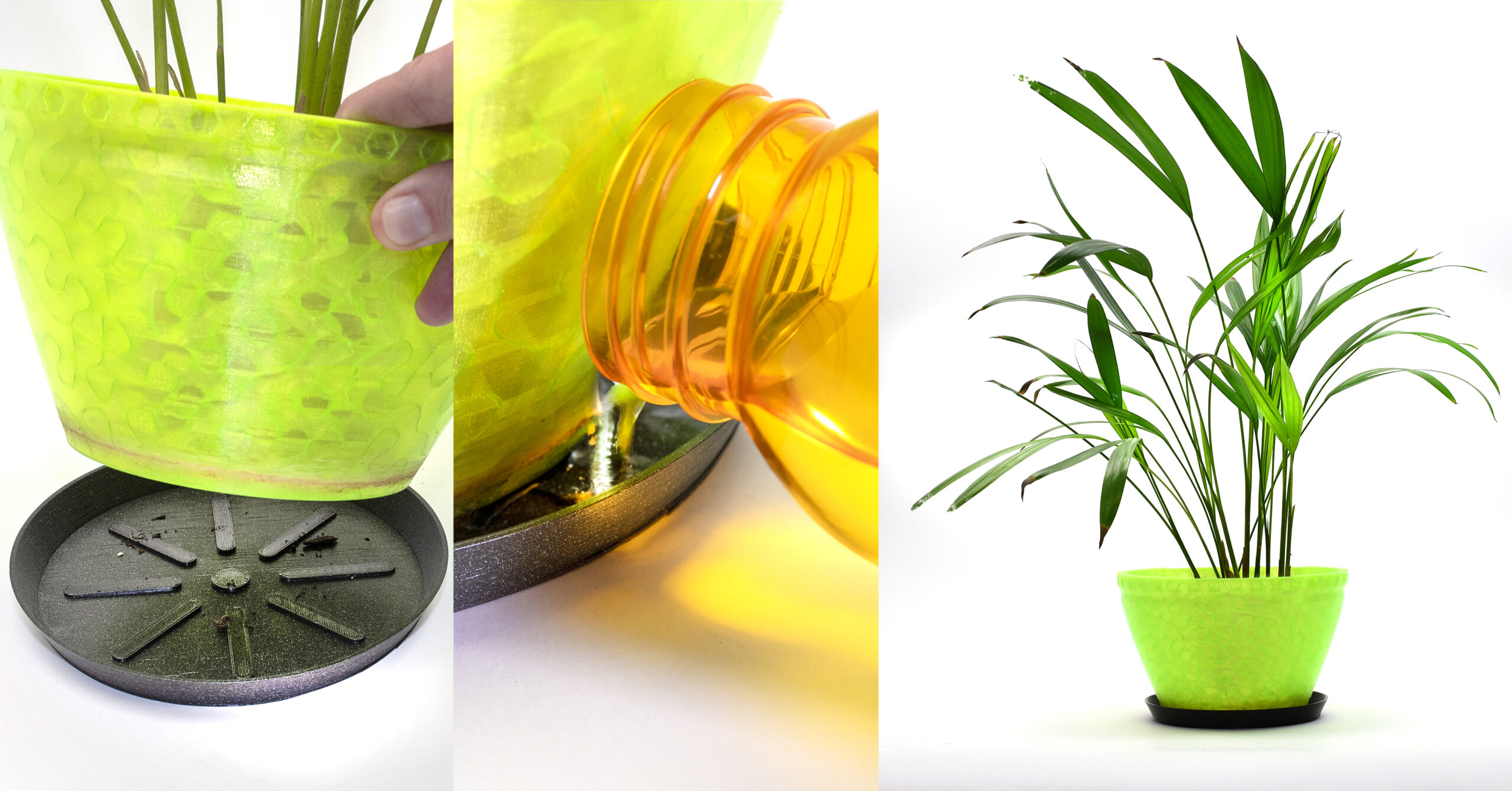 Plant pot with hexagons model on PrusaPrinters, Simple Plant Pot Coaster by Michael
Plant pot with hexagons model on PrusaPrinters, Simple Plant Pot Coaster by Michael
Self-watering planters
That’s where self-watering planters come in. It’s basically the same concept, but instead of a planter and a tray, it has two shells with a cavity in between them, which works as a water reservoir. The outside shell must be watertight, on the other hand, the inside shell is not and it pulls the water from the reservoir through small holes or with the help of a wick. The reservoir capacity can typically be quite big, so you fill it (about) once a week and the plant just continuously pulls the perfect amount of water upwards.
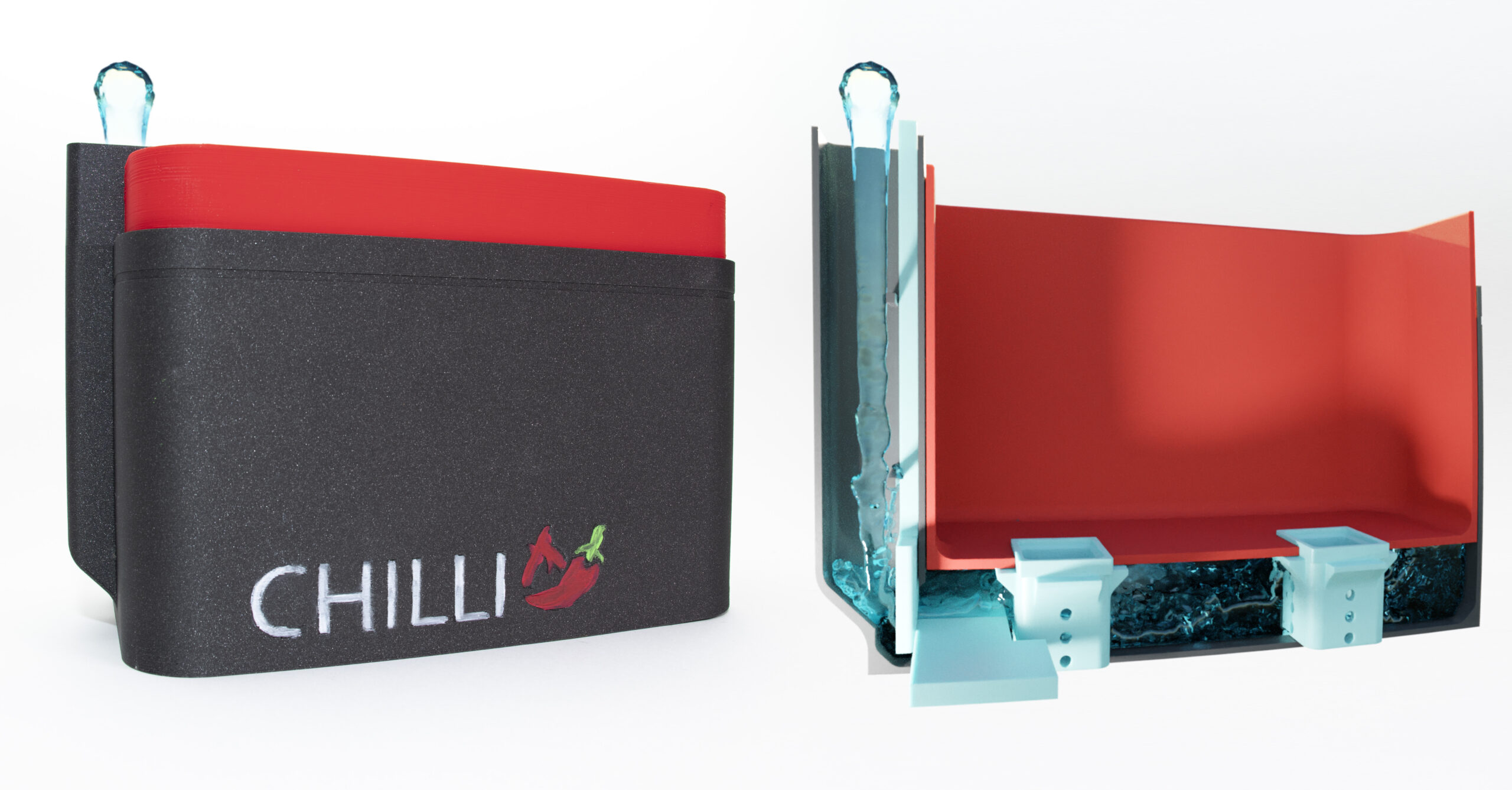 Self-watering planter model on PrusaPrinters
Self-watering planter model on PrusaPrinters
Yes, there are plants that do not like self-watering planters, for example, cacti. But most of them do, especially herbs, tropical plants or vegetables.
Commercially available self-watering planters can be quite expensive. And the selection is pretty limited. So here you might even save some money by printing one!
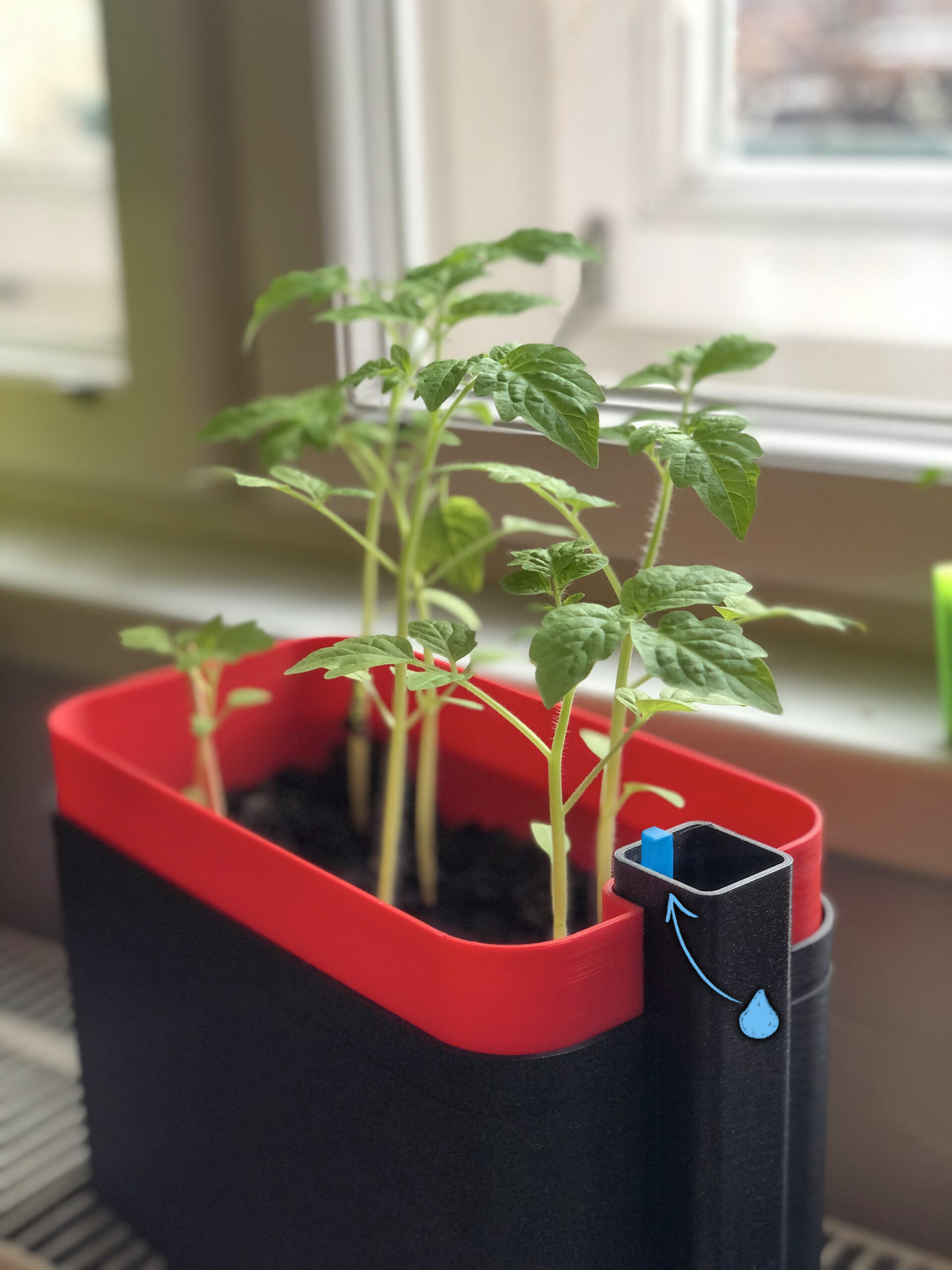
A nice touch is to add a floating water level indicator. It will make it much easier to tell when it’s time to refill the reservoir.
And what’s also cool is that you can use a traditional pot as the outer shell and print just the self-watering insert. Trying to buy one that would fit your pot perfectly would be very difficult. But with 3D printing, you just re-scale the model in the slicer to the correct size. And that actually leads us to point number 2.
Make it the perfect size
One of the biggest advantages of 3D printing pots is that you can make them in any shape and size you want. Instead of going to several shops, only to buy a traditional round pot that just sort-of fits where you need it to, you can print a rectangular pot, that will fit perfectly between your double windows, on your windowsill or on that weird-sized shelf that you have.
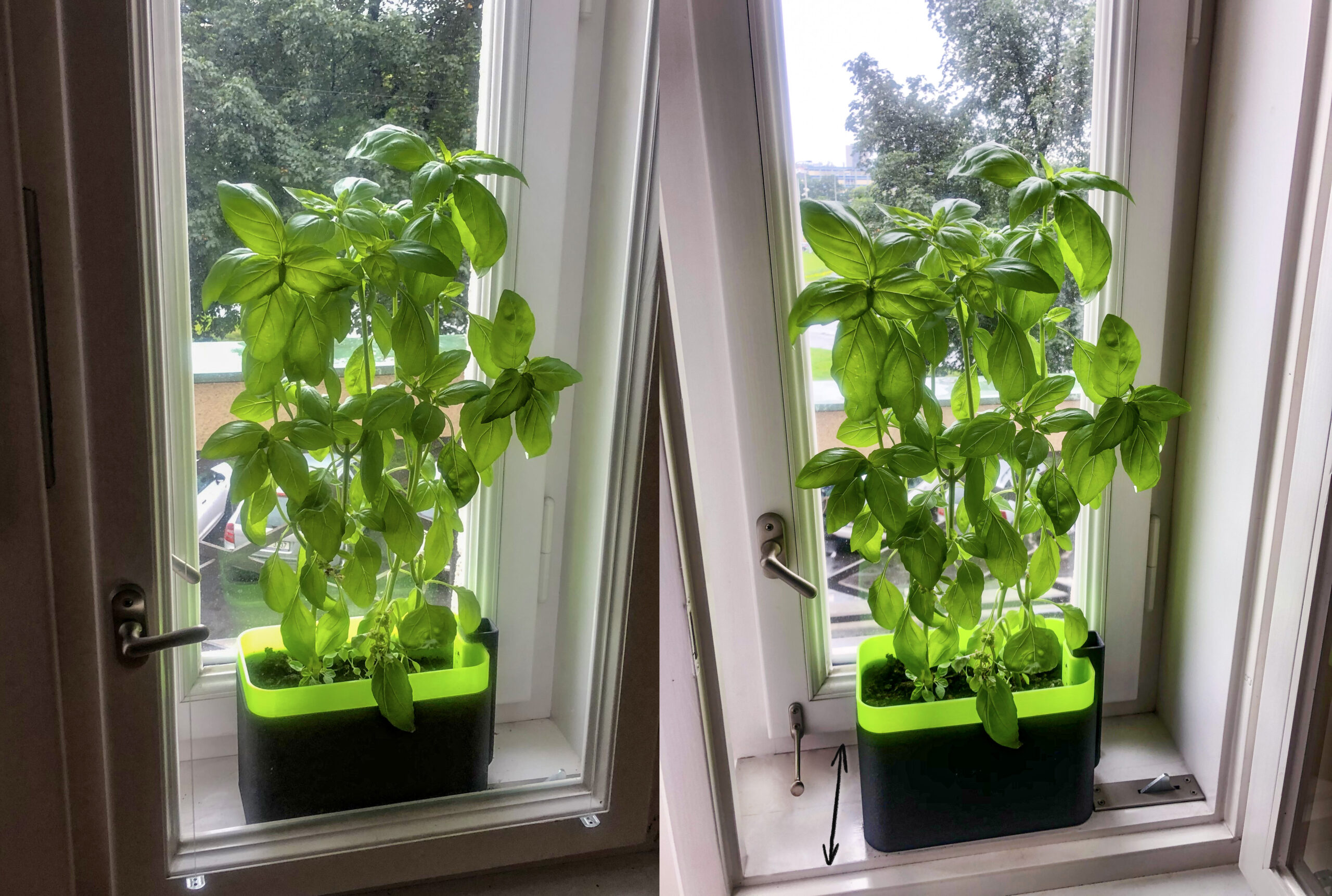 A self-watering flower pot that fits perfectly in between (my) double windows
A self-watering flower pot that fits perfectly in between (my) double windows
Flower pot as a piece of art
3D printing gives us incredible freedom when it comes to the shape of the pot. Sure, we try to avoid using supports, but other than that, the possibilities are nearly endless. You can go for a classy look or do a fun twist of an object from your favorite movies or game. Either way, you’ll end up with an unusual pot that becomes a great conversation topic every time a fellow green thumb visits your home.
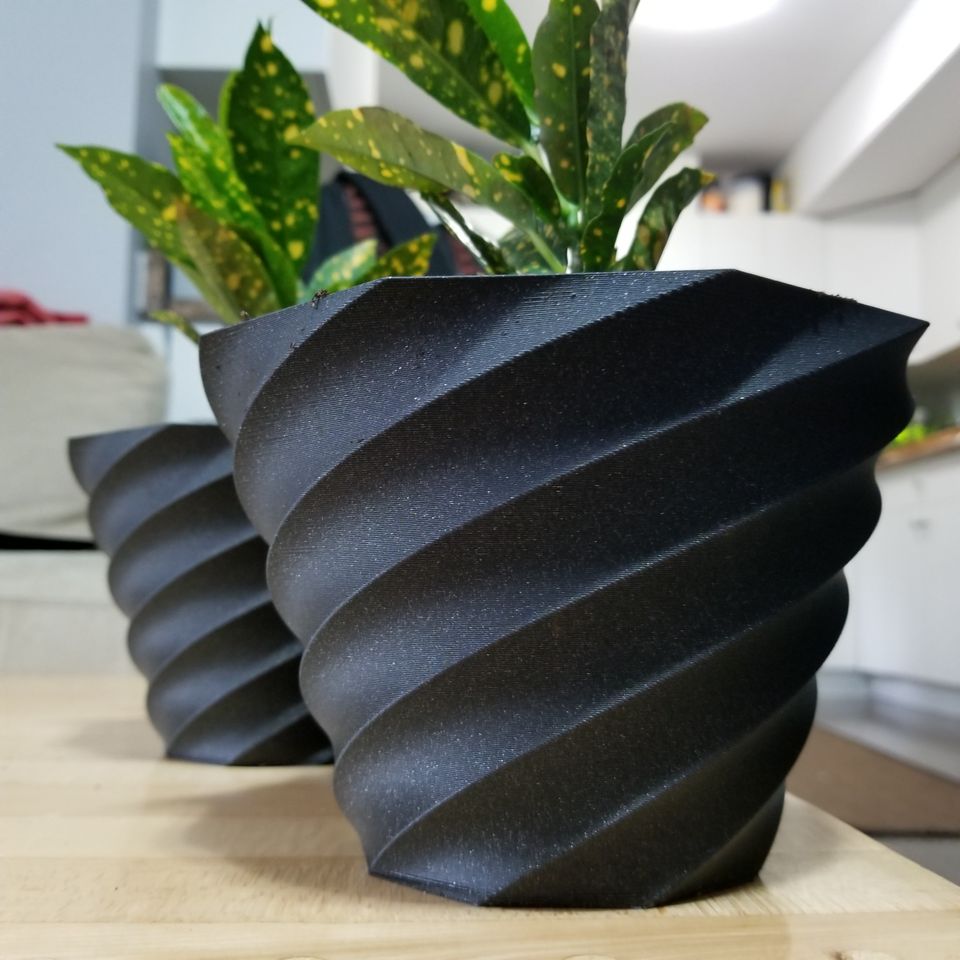

9 Sided Twisted Planter by Dub MFG, Pokemon Planter by Agustin Flowalistik
Pick any color and add labels
These days, the color palette of available filaments is really wide. So matching the color of your pots and the color of your curtains, couch or painting is easy. And some filaments, like our Prusament Galaxy Black, have a distinct look that you simply won’t find in any gardening store.
You can also match the color with the kind of plant you’re growing. Use the same planter, but printed in red color for chili pepper plants, a green one will go well with herbs.
You can also emboss or deboss labels to your plant pots or print small standalone labels, if you have a bigger garden.
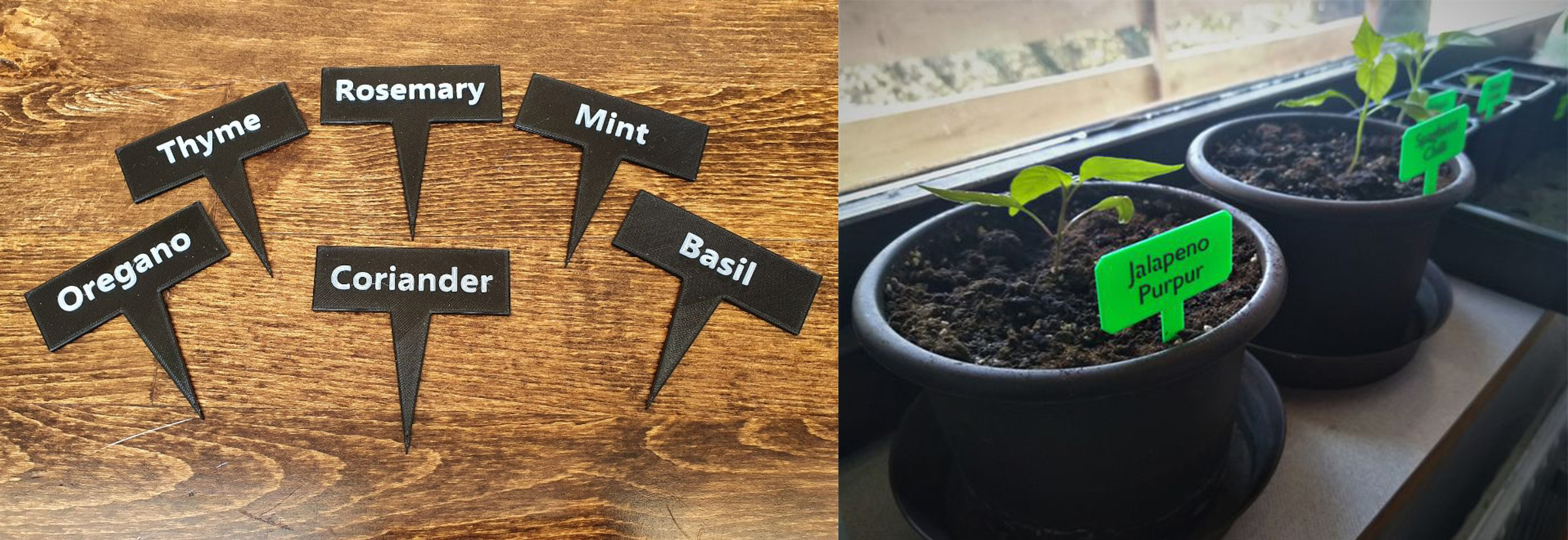 Plant Labels by Dave, Plant label by Kaashul
Plant Labels by Dave, Plant label by Kaashul
Grow Lights
Depending on where you live and the plants you own, you might want to consider experimenting with some grow lights. They often have a characteristic purple color, since the most important wavelengths for plant development are blue and red. You can get them in various forms, but our favorite is a good old LED strip, which is easy to wire and embed in our 3D printed projects. Generally, you shouldn’t leave grow lights on 24/7. Plants need a light-dark cycle to develop properly. But you can buy a cheap plug-in timer switch or a smart switch to have the lights automatically turn off for a few hours during the night.
Like all artificial light sources, grow lights also generate heat. Placing them in an aluminium LED profile will provide passive cooling for them and prolong their life. We designed a simple holder for such LED profile, which attaches to a planter box. Splitting the sides into multiple segments enables us to quickly adjust the height of the light, so you can raise it higher as your plants grow.
 Plant box LED bridge model on PrusaPrinters
Plant box LED bridge model on PrusaPrinters
Propagating, seed starting and mini greenhouses
Avocado/mango boats
Growing a plant from leftover fruit seeds will give it a fun backstory! However with some plants, like avocados and mangos, this can be quite the challenge. If you search for a guide online, you’ll most likely end up sticking a bunch of toothpicks to the pit and partially submerging it in water. However, as the water evaporates, you’ll have to continuously keep refilling it. And it can often take weeks for the sprouting to happen. 3D printing to the rescue! If you print a boat for the pit, it will float and keep the pit perfectly submerged for extended periods of time. As the water evaporates, the boat will go lower as well. Once you move the plant into soil, you can simply re-use the boat for your next sprouting project.
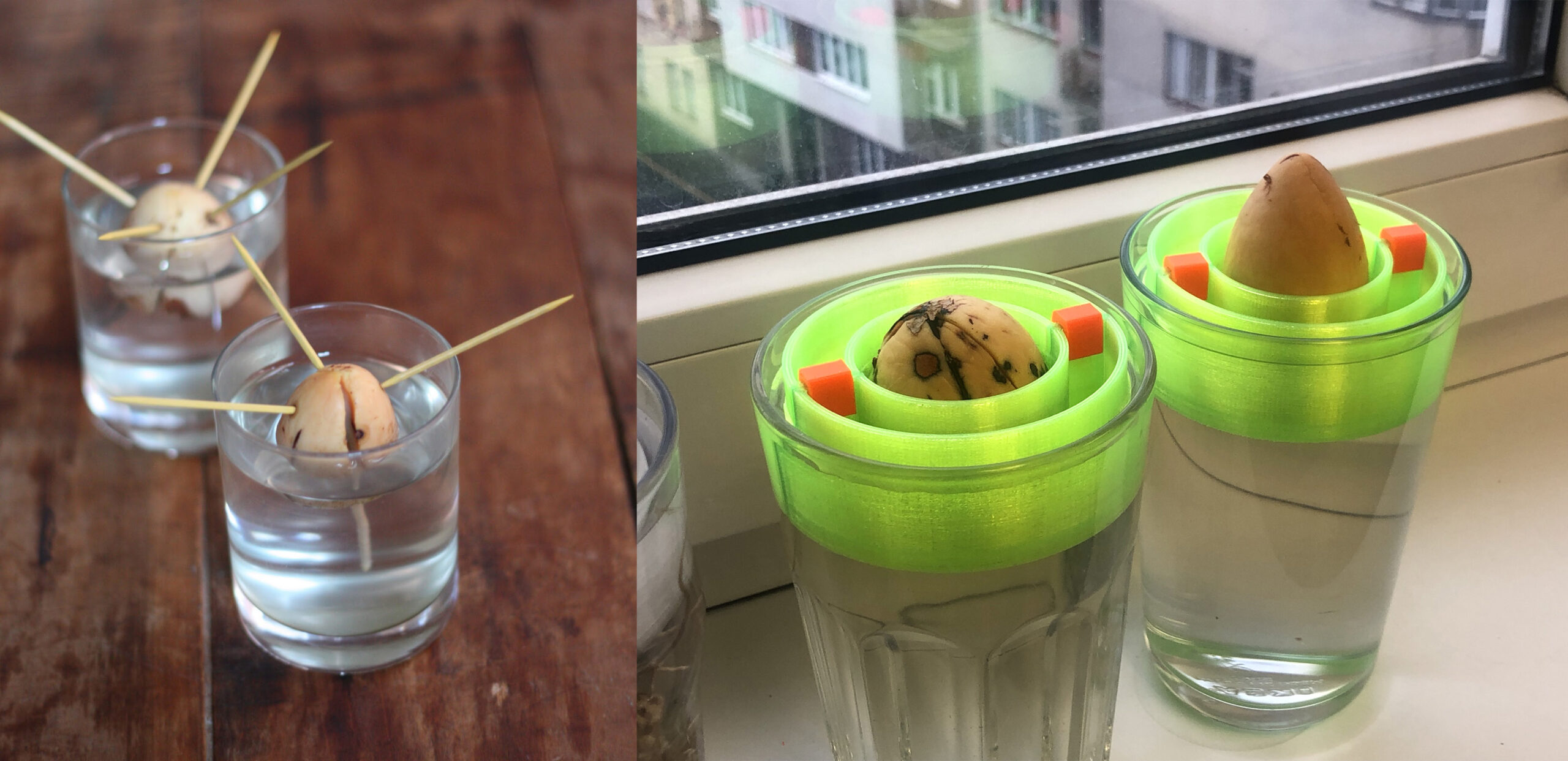 Avocado Seed Floater on PrusaPrinters, alternative single-piece design by Dominik Cisar
Avocado Seed Floater on PrusaPrinters, alternative single-piece design by Dominik Cisar
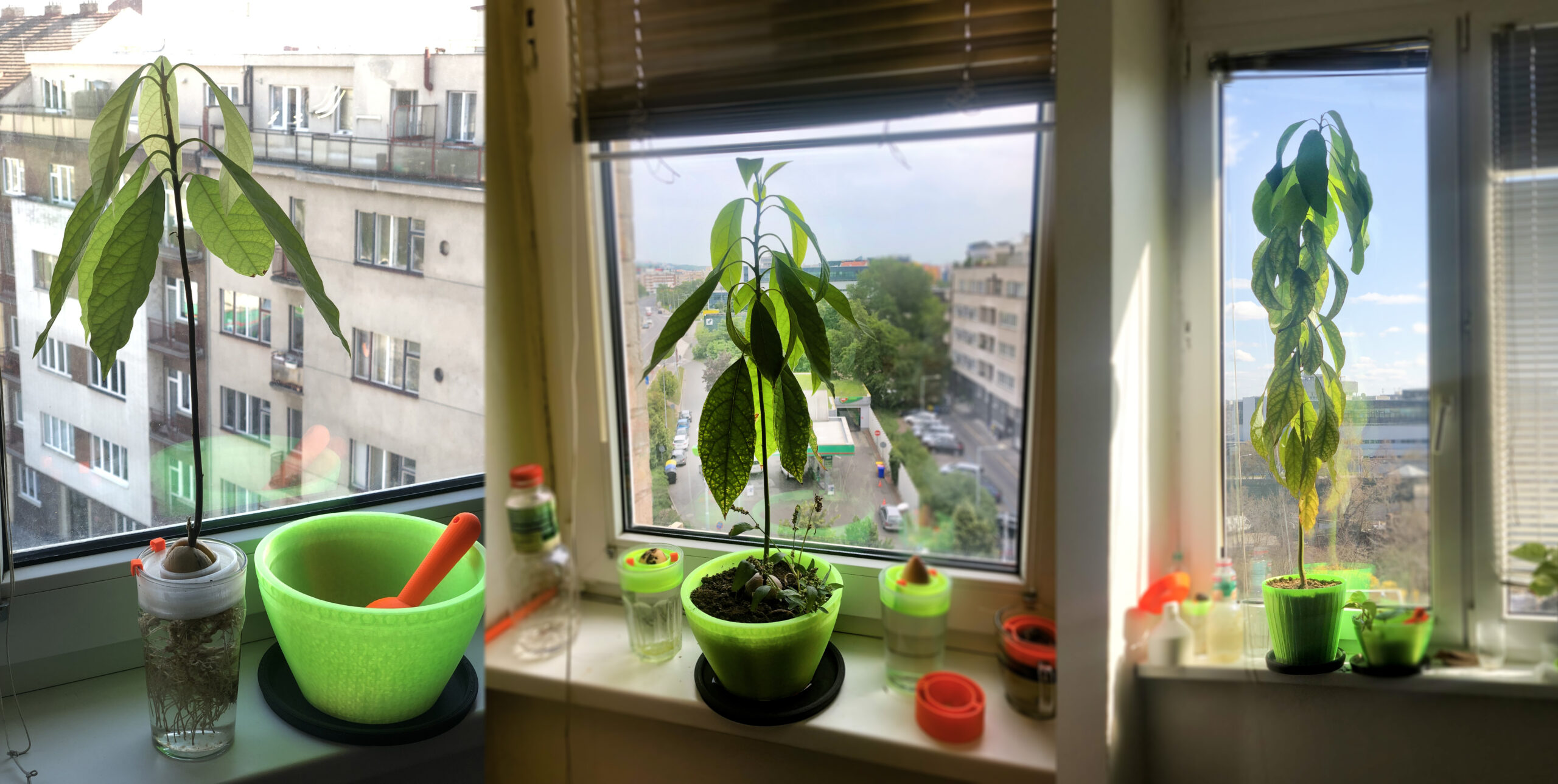 From pit to a huge plant, an avocado plant in our office
From pit to a huge plant, an avocado plant in our office
Propagating
Plant propagation is a million-year-old lifehack. You can cut an existing plant, place it in water for a few days/weeks and it will start growing roots. Of course, you can repeat this process on the new plant as well, starting a geometric sequence of plants that will quickly take over your home. Imagine the possibilities, infinite basil and pesto 🙂
You can use just ordinary glass to propagate your plants. However, just like with avocados, the water will evaporate rather quickly. The plant will also move a bit in the glass as it tries to orient itself towards the sun. Sometimes, this can lead to a leaf getting submerged and rotting away. Lastly, because glass exposes all of the water to direct sunlight, algae will start growing in it. None of these is really a big problem, but it leaves some space for improvement.
I’ve printed myself a fancy propagating station! It has a big water reservoir and a few slots for net cups. These printed cups can be filled with rock wool or similar medium and they’ll hold the plant nicely straight up. As a finishing touch, you can add a few grow LEDs to the top. The height of the top arch is adjustable via insertable rectangle stand-offs. So you can raise it up if the plant gets too tall.
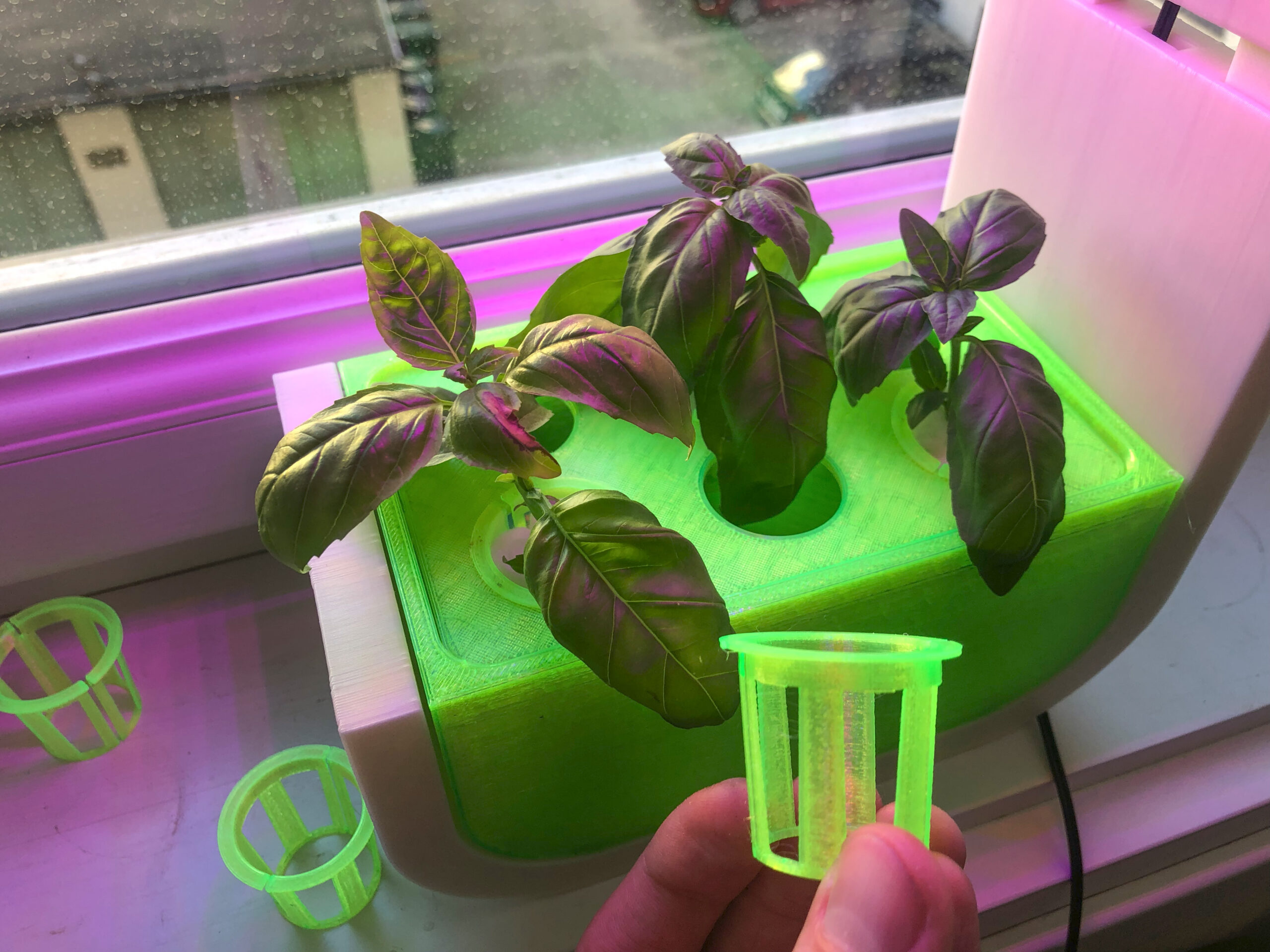
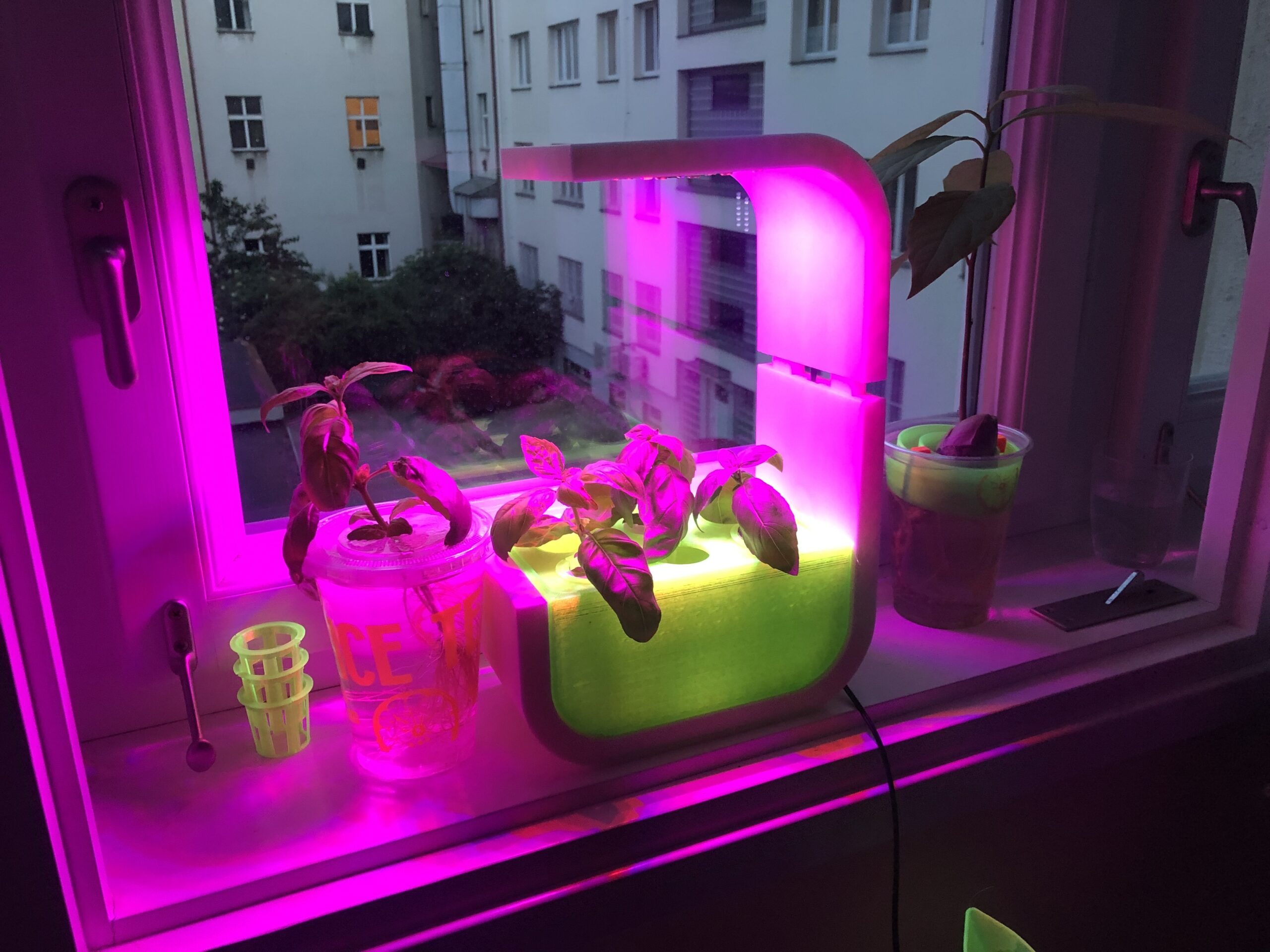
Propagation station/planter model on PrusaPrinters
Of course, if you remove the lid of the water reservoir and use soil instead of water, the exact same design turns into a normal planter. Though it doesn’t have any self-watering capability in the current version, feel free to remix it in any way you desire. 🙂
If you don’t move your plants into soil, they will seemingly keep growing just fine. Hydroponics is a big standalone topic, but in short, tap water doesn’t have enough nutrients to support your plant long term on its own. Simply move your plant to soil once you see a nice root system growing.
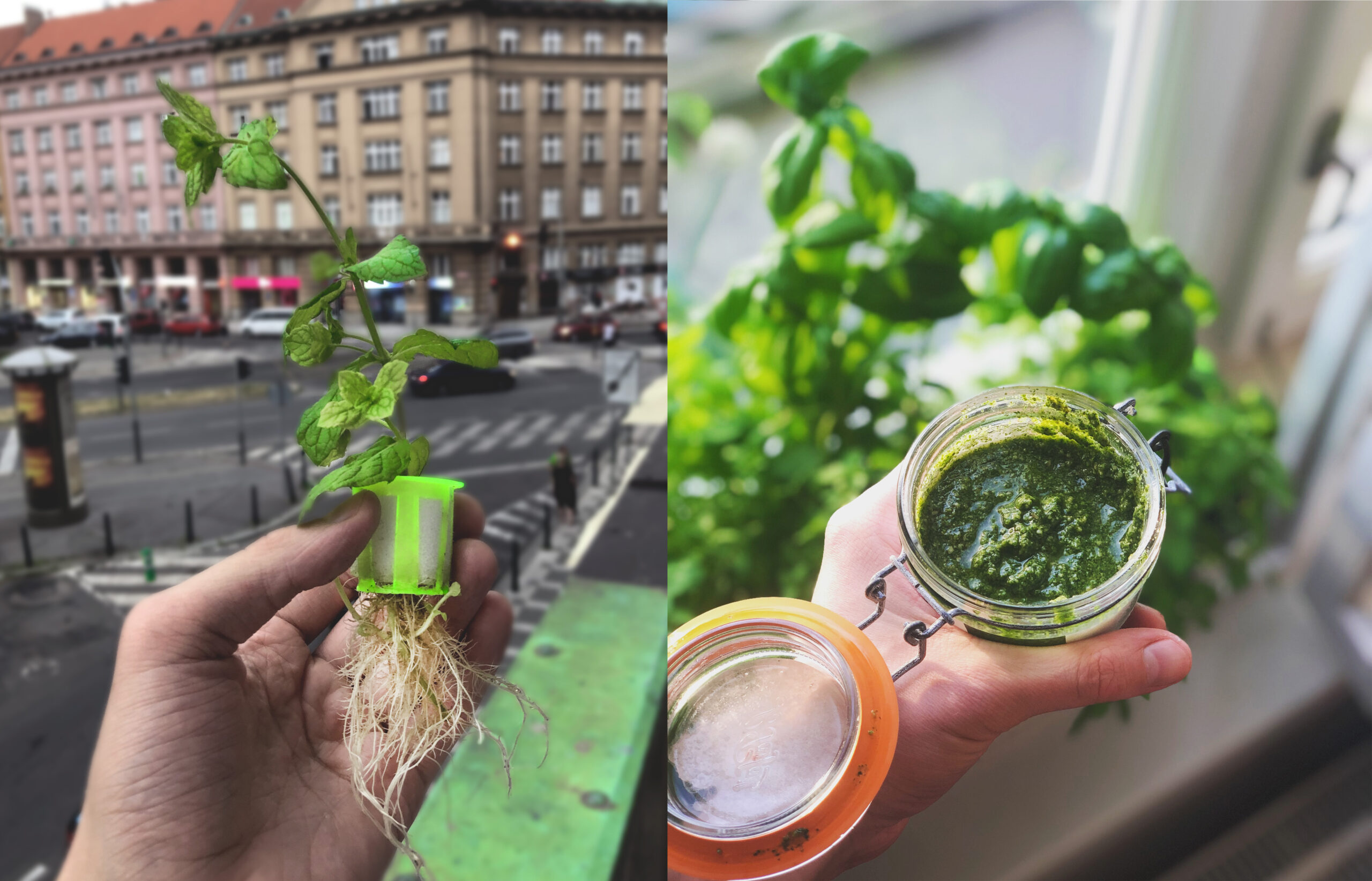 Mint cutting that has grown new roots and freshly made pesto from home-grown basil
Mint cutting that has grown new roots and freshly made pesto from home-grown basil
Seed starters and Mini greenhouses
If you want to try growing plants from seed, consider investing in a “seed starter”, it looks like a mini greenhouse. These can be bought quite cheaply either injection molded or vacuum formed and it probably doesn’t make much sense to print them. However, what you can print are small cups for individual seeds or a small led holder. As we mentioned before, grow lights also produce heat, which is a welcome side effect in this case. Some seeds won’t sprout unless the temperature is high enough. If you print the LED holder from PLA it will eventually deform (as seen in the picture) so a high-temp material (PETG, ASA, PC…) or a combination of a printed part and aluminium profile is preferred.
 Seed starting mini cups on PrusaPrinters
Seed starting mini cups on PrusaPrinters
Fun fact, if you put Prusament PETG Neon Green under grow lights, you’ll find out why we call it that way 🙂
Plant supports
Climbing plants need some kind of support, otherwise, they’ll just crawl on the ground. You can buy wire or wooden grid supports, but with 3d printing, you can create some unusual shapes.
 Honeycomb plant support by Staanick
Honeycomb plant support by Staanick
Smart planters and IoT gadgets
If you like playing with Arduino and other electronics, there are a lot of fun projects that include plants. You can start with monitoring the soil humidity and changing the color of a flower pot stand based on the measured value. If you use a board with networking capability, such as the ESP8266, you can log the values online and send fun emails.
From: Your dying plant
Subject: Water me, please!
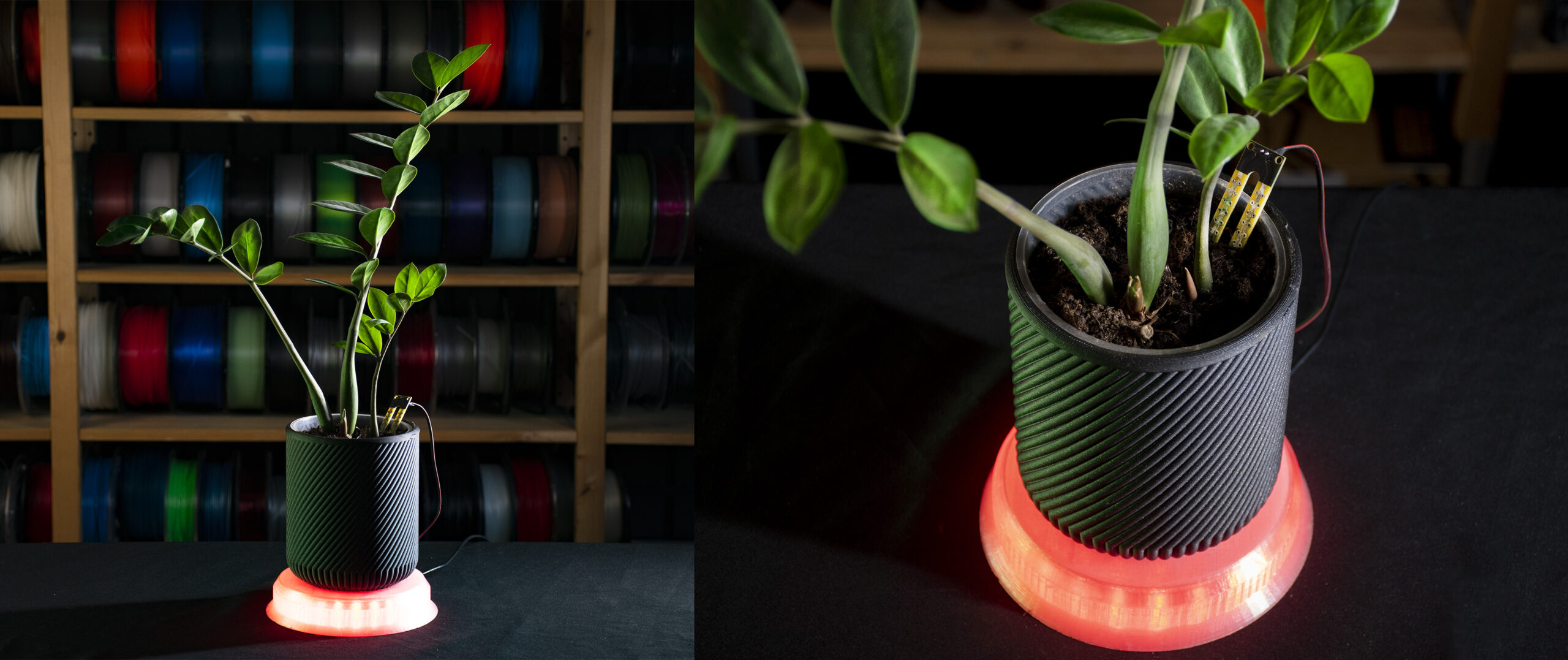 Flower pot stand with RGB LEDs, Arduino and a soil humidity sensor, planter model by Wilko
Flower pot stand with RGB LEDs, Arduino and a soil humidity sensor, planter model by Wilko
If you want to go for an even more advanced project, you can add a small water pump and automatically water the plant when needed. Such a system will have minimal power consumption, so you could add a small solar panel and a battery to avoid using an external power supply.
There are many uses for 3D printing in combination with plants and we just glanced over some of them. For example, hydroponics and aeroponics would make for a nice standalone topic for a future article, let us know if you’d like to see that. If you’ve already used 3D printing for a gardening project, we’d love to see pictures of your prints (tag us on Twitter). And if you haven’t, the growing season is just starting, so why not give it a shot 🙂
Happy printing!






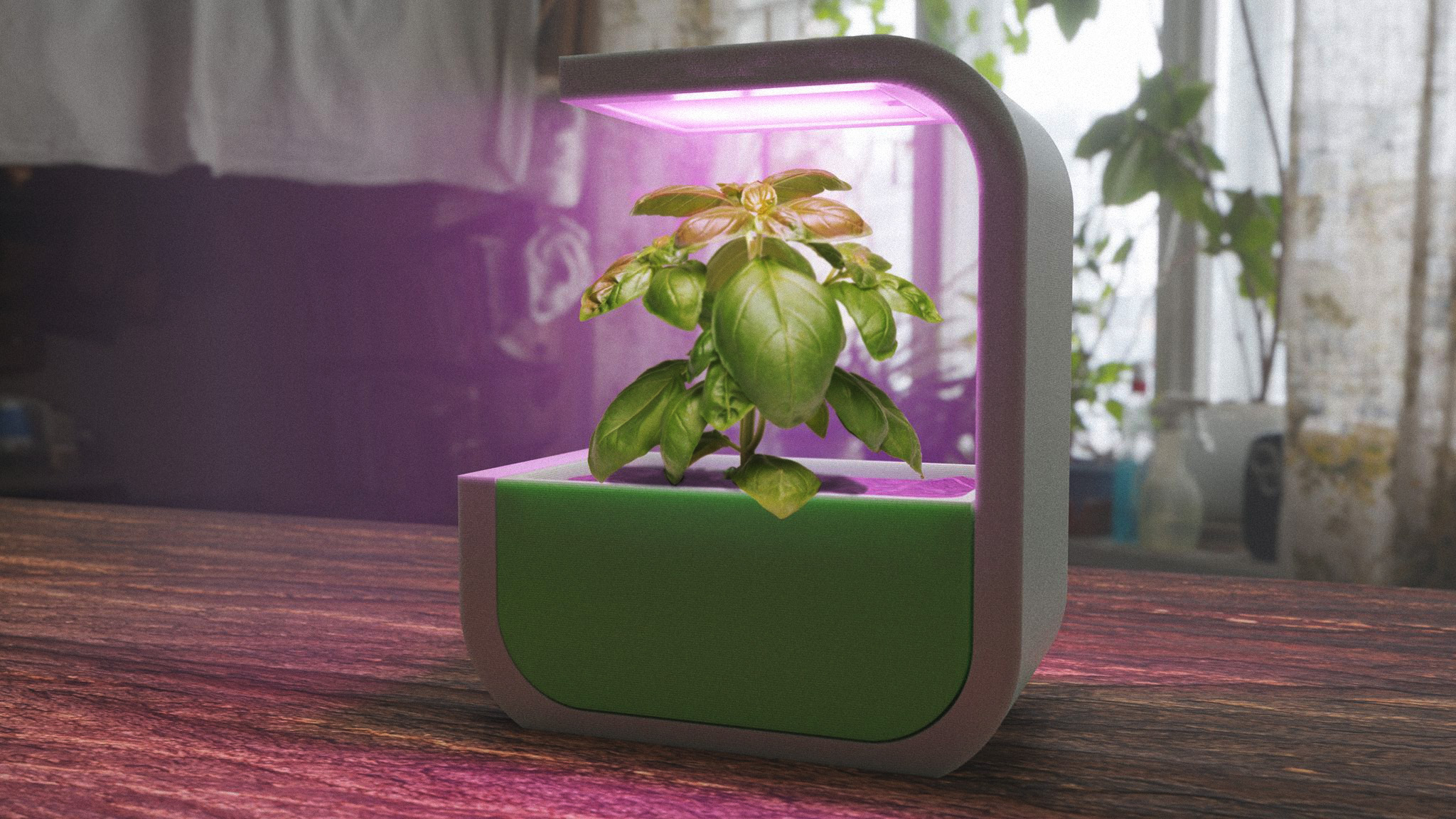
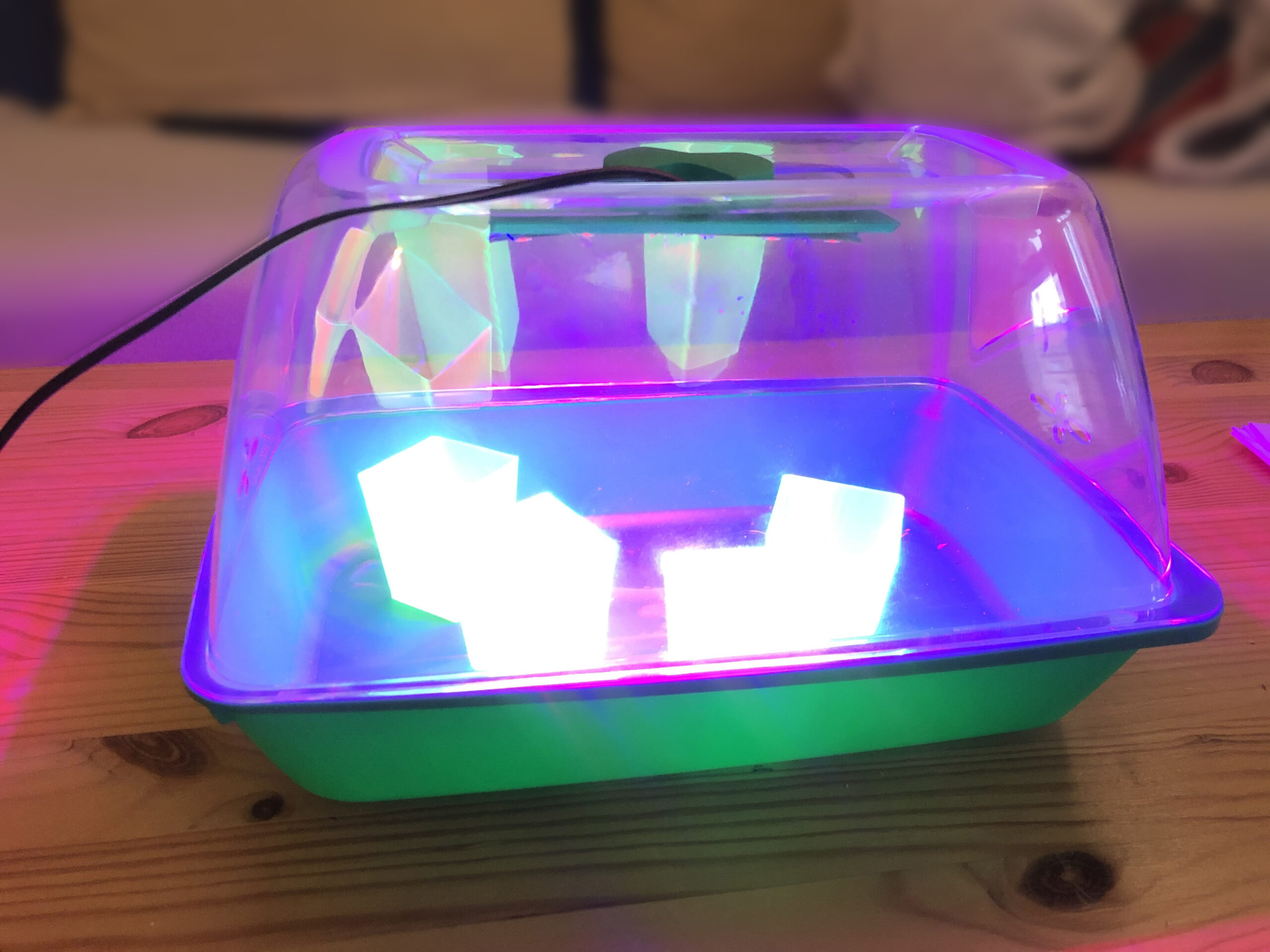

You should print for your needs and not create more waste for the oceans!
And that’s what we all do I hope, well i am any way.
Really cool projects here! I’m saving this one
Good post!!!
Nice post https://google.com
That’s so cool and a pretty project! I like gardening and decorating my room with trees and plants. I decorated my reading room and table with the green plants since love reading and writing at https://assignmentbro.com/us/math-assignment-help and help students with their academic writing ready in time. Thanks for this post! Now I know how to care about my plants better!
The filament is not food safe. What are your thoughts re: growing herbs, vegs, fruits in 3d printed pots?
You need to educate yourself on why certain filaments are not food safe. If you knew that, you wouldn’t ask a question such as this.
you’ve forgotten the best smart, self-watering plant pot. But it has only recently been online 😉 https://www.thingiverse.com/thing:4921885